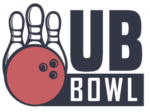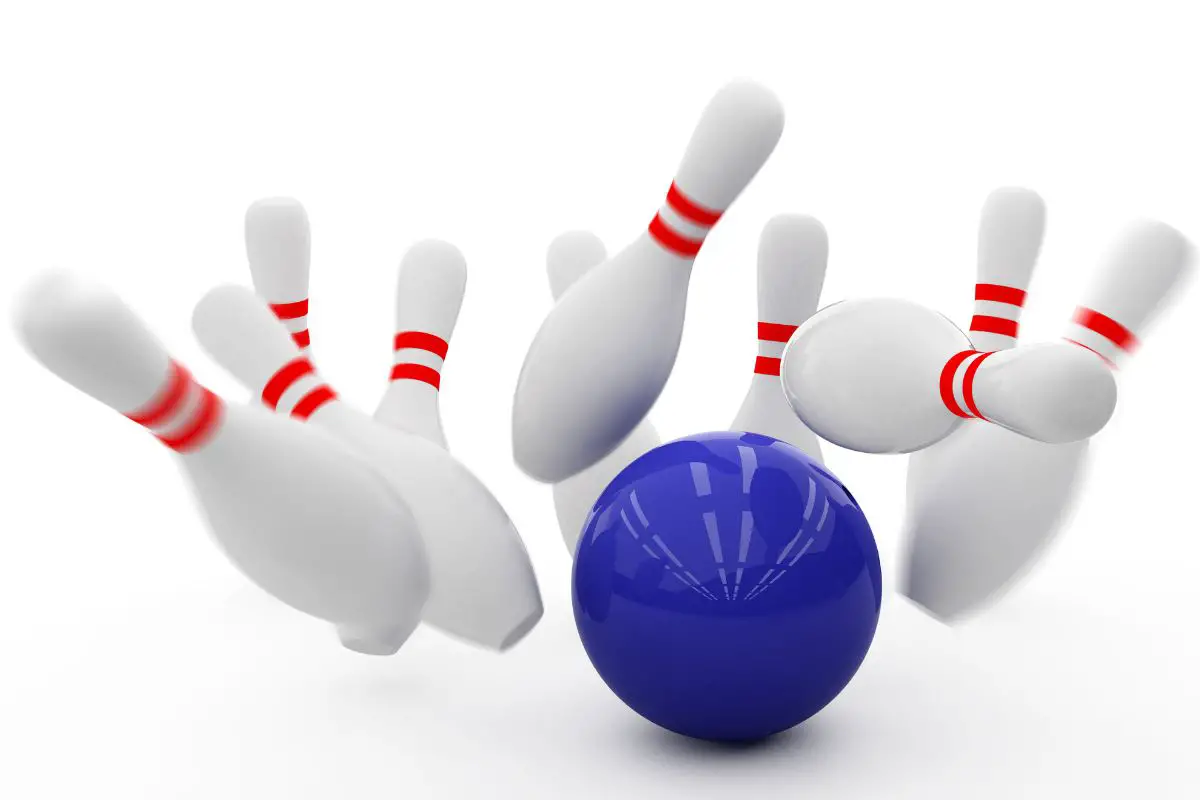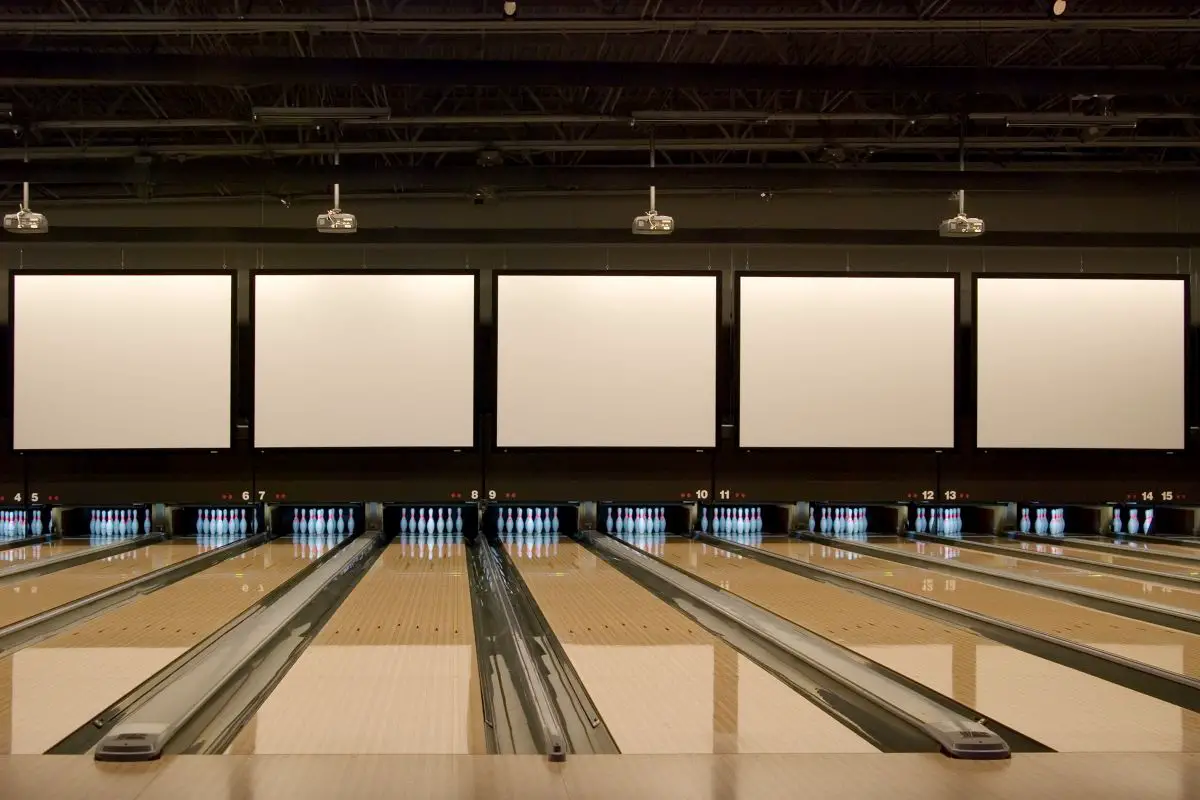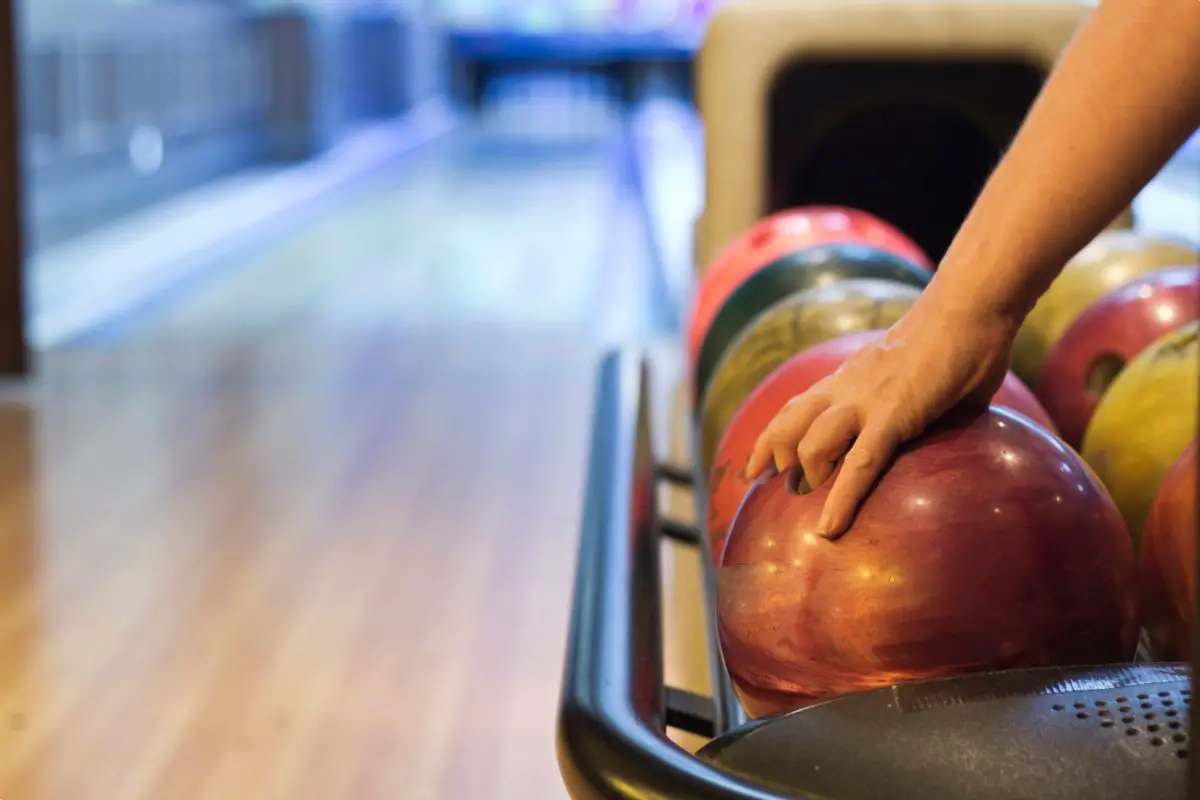If you’re buying your first bowling ball or maybe looking to upgrade, you may be wondering what kind of price you’re going to have to pay.
As there’s such a variety of choices on the market with different terms and specifications, it can feel like an extremely daunting task.
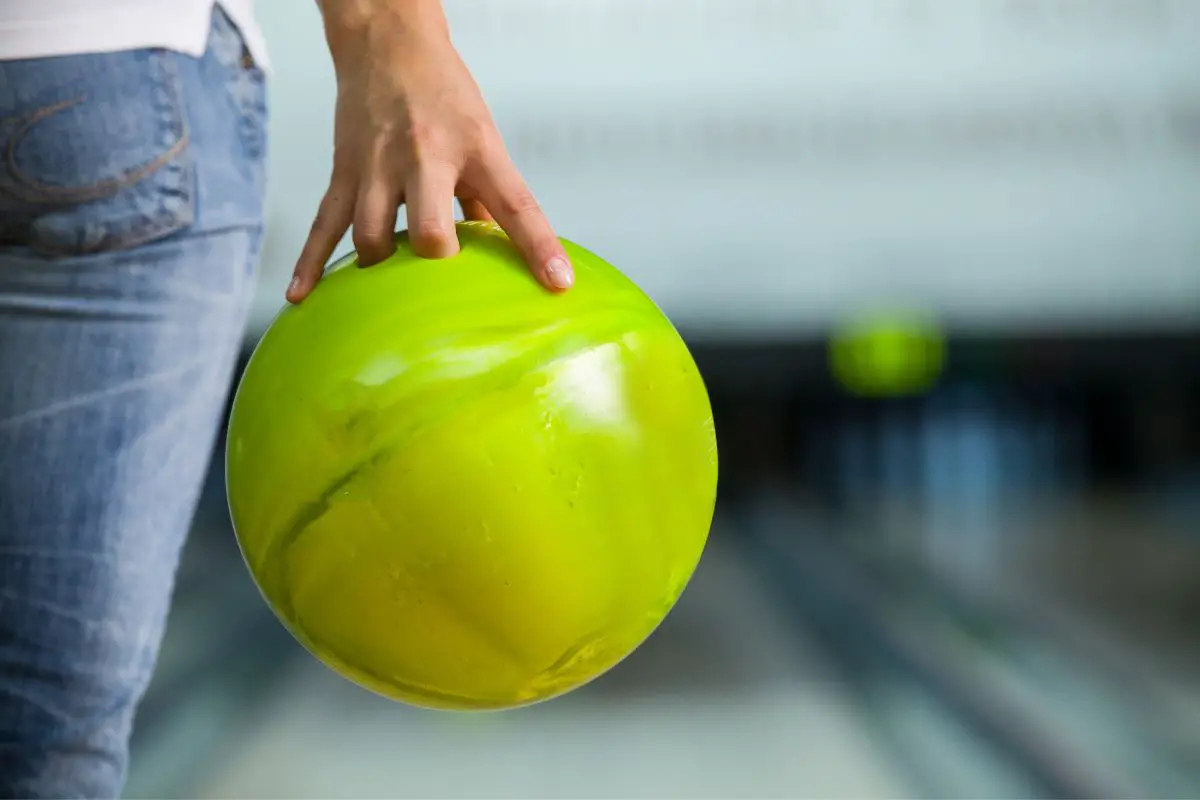
As with most sporting goods, prices can vary depending on the specification of the item. Bowling is no different.
The more advanced bowling balls are more expensive, and the cheaper balls may not have the same amount of power.
No matter your skill level or purpose for purchasing, we don’t want to overpay for an item if we don’t have to.
We all like to get value for our hard-earned money. Learning what bowling balls serve which specific purpose is key knowledge for all bowling enthusiasts and can also help you identify what you should be paying.
We don’t want you to spend money on a ball that won’t help improve your game or is way too advanced for your level.
We’ve created a guide breaking down the different types of bowling balls and what they are best suited for, with some great examples of well-rated products in the typical price ranges.
Are There Different Types Of Bowling Balls?
If you’re a complete novice like myself, you may not have even realized that there were different types of bowling balls. The main difference between bowling balls is what they are coated in, otherwise known as the coverstock.
Different coverstocks are used for different purposes, each coming with a variety of advantages and disadvantages based on need and performance.
Each coverstock comes with a different price tag, which can be considered to be one of the pros or cons when purchasing a new bowling ball.
In order to find the right bowling ball for you, choosing the material is considered the most important decision. Therefore, we need to explore the different types of coverstock a little more in-depth.
Plastic
Plastic or polyester bowling balls are ideal for beginners and are typically what you find in your local bowling alley rack.
Plastic is a fantastic multi-purpose material, well known for its durability and lower price tag, which is why it’s so popular in high-traffic areas such as these.
This basic material creates a smooth finish, meaning that the ball doesn’t create a lot of friction with the lane surface itself.
When you’re starting out and are probably just aiming to bowl your ball in a straight line, this is perfect for you.
Many advanced or professional bowlers like to have a plastic ball as a second ball to be used for this exact purpose. They can also be used to score a spare.
Urethane
Polyurethane or urethane is a durable, versatile coverstock that is a mix between rubber and plastic. It’s no wonder why it has become so popular with bowling retailers.
Urethane balls are more common with intermediate players who have developed or are developing more specific skills, such as hooking. A hook is a ball that rills in a curved pattern as opposed to in a straight line.
The material achieves this by creating greater friction with the lane surface than its plastic counterparts.
Urethane balls are more suited to those learning to hook as they are able to maintain control over the bowl whilst simultaneously playing with the hook.
Reactive Resin (Or Resin)
Reactive resin is a form of polyurethane combined with additional additives to increase the ball’s porosity.
It’s a relatively modern innovation in coverstock materials with the intended purpose of creating even greater friction between the ball and lane surface to allow bowlers to bowl an even bigger hook.
Reactive resin is usually used when lane conditions are very oily. This type of bowling ball is most popular with advanced bowlers due to the maximum hook potential, which requires a lot of skill to execute due to its sensitivity to the lane’s oil density.
Reactive resin is a broad umbrella term for the type of bowling ball. However, there are a few subcategories – reactive solid, reactive pearl, and reactive hybrid.
Although they react easily to different lane conditions, they all have advantages based on the player’s bowling speed, hook sharpness, and general approach.
Therefore it’s important to conduct lane research before bowling to identify the correct ball to use. Again, this is for advanced or professional players, so if you’re a novice, you don’t need to worry about these specifics.
Particle (Or Proactive)
Lastly, we have the particle bowling ball. This ball is made from the thickest material for the maximum possible friction.
Microscopic silica particles, tiny shards of ceramic or glass, are added to reactive urethane to create a recognizable roughy and bumpy texture. Often, particle balls are slightly heavier than traditional bowling balls.
These additional particles help the ball stick to heavily oiled lanes creating the most hooking potential and spinning motion out of the types we’ve discussed here.
Particle balls are notoriously tough to control, requiring a high level of skill to bowl accurately due to their weight and texture.
Use a particle ball if you want to increase the overall sharpness of your shot and backend reaction. As a result, these are only used by highly skilled professionals with a fair amount of experience.
Nevertheless, we wanted to mention this type of ball to give the reader a clear picture and understanding of the types of different bowling balls available and what they are used for.
Bowling Ball Cores
Many assume a bowling ball core is probably just a lump of rock or cement in a spherical shape with a pretty coating over the top of it.
This might have been true in the past, but today, they are actually far more complex than you think.
Bowling ball cores come in a variety of shapes and sizes in order to serve different purposes. These are symmetrical, asymmetrical, and pancake-type cores.
An asymmetrical core decreases flare potential, leading to a smoother hook and a more even-rolling bowl. Asymmetrical cores do the opposite and increase the hook’s sharpness and overall potential.
They also respond faster to friction between the lanes and are considered to cause more back-end chaos than their symmetrical counterparts.
Lastly, the pancake core has the least amount of hooking potential and flare. The ‘puddle’ ‘-like shape means it cuts down variance and heavy rolls creating a smoother, controlled shot.
How Much Do Bowling Balls Cost?
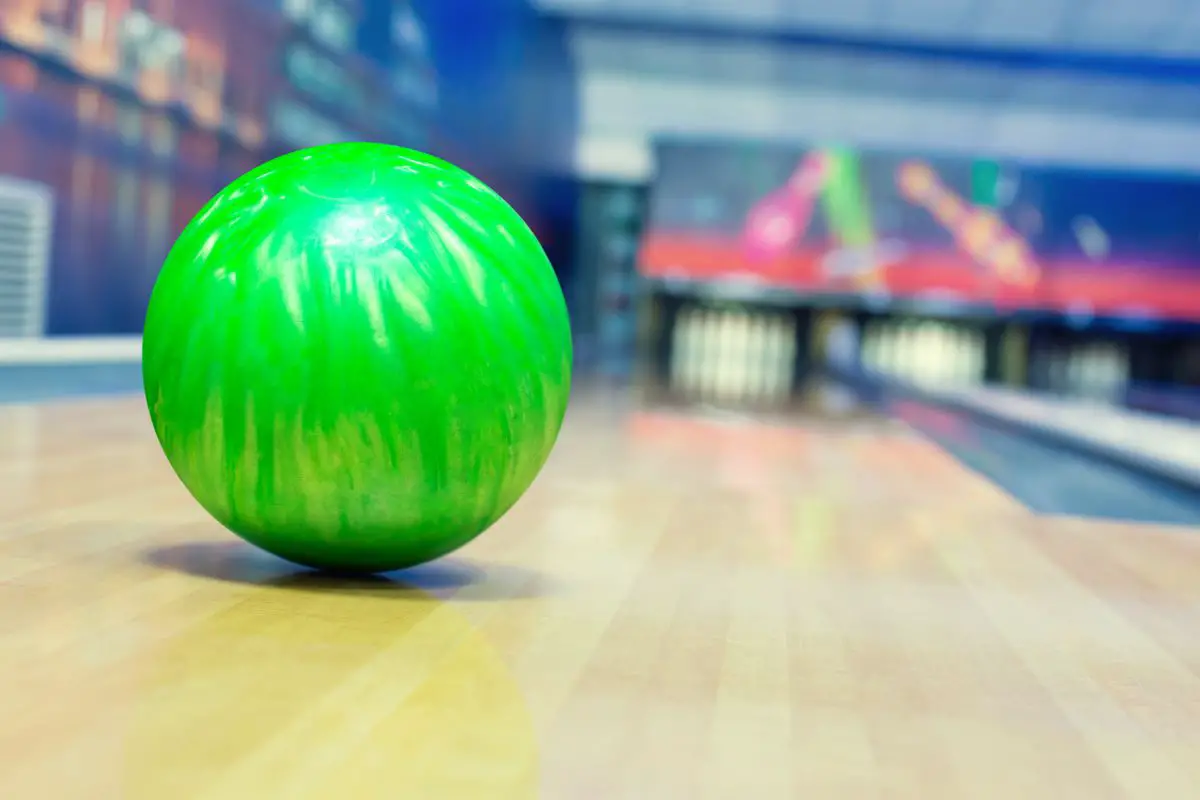
An entry-level bowler could expect to pay anywhere between $40 to $60 for a plastic or polyester bowling ball. Professional and advanced bowlers are looking to spend over $100 for a higher-end bowling ball.
As we said before, price tags vary. It’s dependent on the type of ball, the ability of the player, the budget, whether you want customization and much more.
Urethane bowling ball prices range from $75 to $150, so you can see the jump in price already as you graduate to a slightly more advanced ball.
Those who are looking to develop some more skills in their game may want to spend a little more money to invest in one of these balls. As we said previously, these balls have a bit of friction, so you can start to practice your hook.
Unfortunately, as your skills develop, so does the price tag. Reactive resin balls are mainly used by intermediate or advanced players. These players can expect to pay between $150-250 for a durable, quality bowling ball.
If you are a serious bowler, the difference you can expect in the quality of your bowl is worth the money.
On the highest end of the scale, a particle ball will set you back the most, with the average price exceeding $250. These prices are usually reserved for top-level bowlers, so don’t feel too put off purchasing your own ball.
We would advise even the most knowledgeable bowlers to do their research on products with this price tag.
Plastic Bowling Balls
A great plastic bowling ball within the expected price range is the Brunswick Tzone Deep Space Bowling Ball. The ball can cater to a variety of different players as it comes in a range of sizes from 6 to 16 pounds.
The high gloss plastic ball boasts many color options to choose from, depending on your individual preference. It scores fairly low on hooking potential, so would be ideal for a beginner or someone who is looking for a second ball to use primarily for their straight bowls.
Being so widely reviewed and well-received on the market, the value for money with this ball is excellent, costing you between $58 to $77.94, depending on the size.
If you’re willing to pay a little extra, the Storm Ice Storm polyester bowling ball can retain high accuracy with maximal length for $79.95.
The ball is composed of a pancake core surrounded by a pearlized polyester coverstock means it can glide down the lanes with no issue.
This particular price is aimed at the 15-pound ball. However, different weights may cause a price increase or decrease.
Reviews indicate that this ball can give your game a high degree of accuracy, especially as a spare ball compared to Brunswick mentioned above.
Urethane Bowling Balls
The Storm Pitch Black Solid Urethane Ball is intended with control in mind, perfect for lighter and shorter oil conditions or wooden lanes.
The core is described as giving a straighter but stronger delivery, ideal for those who are looking for a consistent and repeatable shot.
Although this ball doesn’t allow you to choose another color, you can choose between weights of 12 to 16 pounds.
At the higher end of the expected price bracket for a urethane ball, it will set you back between $129.95 and $149.95, depending on the weight.
However, we recommend the ball due to the high praise it has received from a wide number of reviews in the marketplace.
For a slightly cheaper urethane bowling ball, the Storm Mix Urethane Bowling Ball is a good choice, costing $80.29 to $98.94.
Its traditional core enhances predictability when bowling, perfect for those who want to purchase their first bowling ball or are looking to use it as a secondary ball for spares.
The ball itself is a black and white color and can be bought in weights ranging from 6 to 16 pounds as well as incredibly durable courtesy of its coverstock.
Many customers have been enthused about this being a great entry-level ball and have rated it very highly on online marketplaces.
Other more advanced bowlers have praised this ball for being just what they needed in order to score spares.
Reactive Resin Bowling Balls
If you’re looking for a first reactive resin bowling ball, the Brunswick Rhino Reactive bowling ball is an excellent choice.
This ball works best in light to medium oil conditions, so there is the possibility it may not provide you with as much friction as you’d like.
You can choose from a variety of different colors and weights between 10 and 16 pounds, depending on your needs and preferences.
The reason for mentioning this product, despite the potential for less friction, is the price. Although you can usually expect to pay between $150-250 for a reactive resin ball, this one comes way under at $69.95 – $119.94, which is a notable saving.
Despite what you may think, paying less doesn’t mean you have to compromise with quality, as this ball has received widespread praise from an extensive number of reviews.
Customers who have previously purchased this ball were pleased with the price and improvement in their bowling scores.
For a tougher ball that will generate enough friction to use on medium to heavily oiled lanes, The Black Widow 2.0 is an ideal purchase. This is a reactive solid bowling ball with a Gas Mask core, weighing in at 15 pounds.
The ability of this ball to increase hook potential and utilize hook sharpness is perfect for a more experienced player, as it can cater to different shot types.
You can expect to pay $140.76 for this ball, which is what we previously said is the typical price for a reactive resin ball.
Hammer’s Black Widow is highly rated even if it has fewer reviews, with previous customers praising its performance on heavily oiled lanes.
Particle Bowling Balls
Particle bowling balls are still available to purchase. However, they aren’t as common as they once were, as some find them to have a limited range of use.
Therefore it can be difficult to find quality balls in the usual marketplaces. Coupled with the fact they are only used by professional bowlers, we won’t be including them in our breakdown.
Additional Costs
Most bowling balls don’t come with the finger holes drilled into them. They come as a solid ball in order for you to customize it for your hand.
This is an important factor to bear in mind, as some retailers will offer you a deal if you purchase a bowling ball from them.
If you’re spending a significant amount of money on a ball, having the drilling process thrown in for free can be a real bonus.
Your local Pro Store will offer a drilling service. A basic package of three holes (two fingers and a thumb) could cost between $30 to $50. This depends on the size of the holes and the individual store.
A custom drilling service comes with a slightly higher price tag of $50 to $70. With a custom service, a more experienced player may also require extras such as finger inserts, switch grips, and thumb guards which can cost an extra $10-15 each.
As you can see, costs can rack up quite easily, so we’d suggest shopping around before to avoid spending more than you have to.
It is common for you to be asked if you’d like to purchase an additional protection fee from the person drilling the ball.
This is a protection service or bowling ball insurance that you can pay in case the ball is damaged during drilling.
Many companies, no matter how experienced, don’t like to be completely responsible for your ball. They offer this service due to the tricky shape and nature of the process. Most places usually charge around $5-10 for this.
We would always recommend researching a reputable Pro Shop before taking your ball in. Even if it seems a lot cheaper than other, more well-known places, it could come at a cost to you.
You can easily find reputable drilling services and their reviews in your local area using search engines. Sometimes it’s better to pay a little more to avoid the risk!
How Much Does A Bowling Ball Cost?
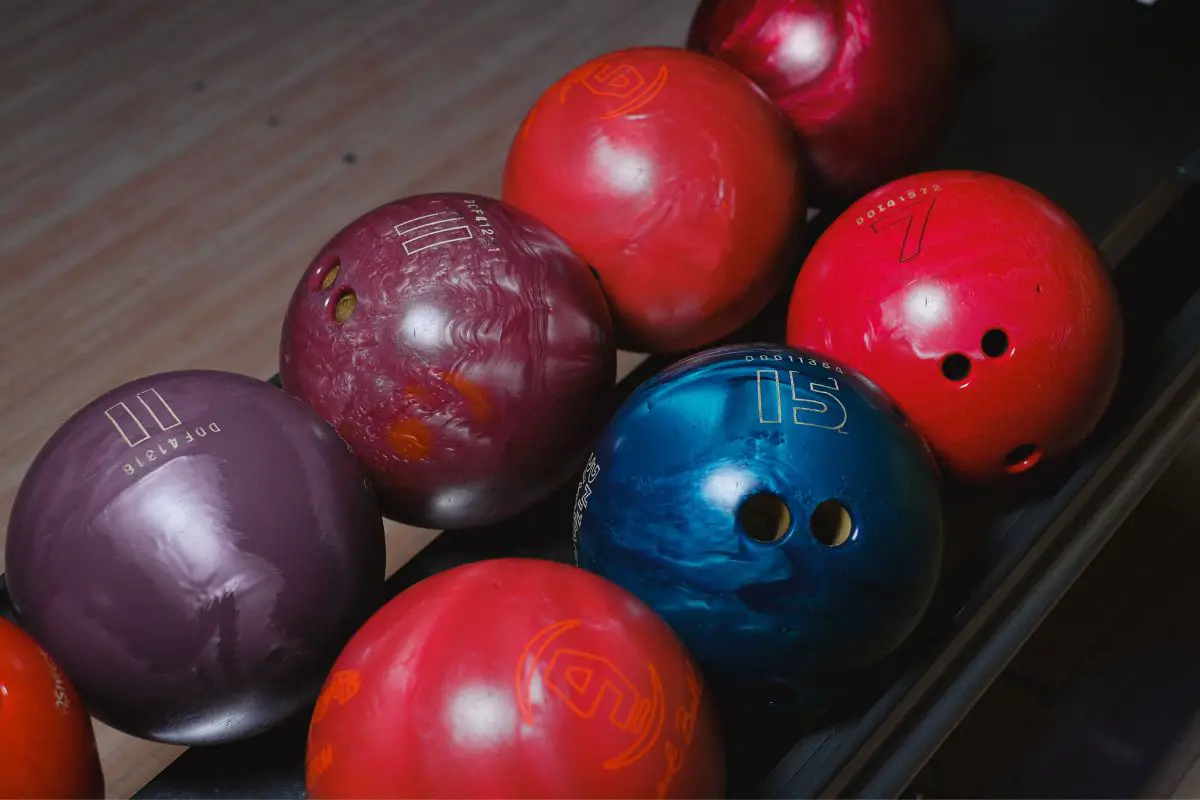
You may have got to this point and thought, is it really worth the hassle of all this time and money? Why don’t I just use an in-house ball?
But if you’re serious about improving your bowling score, then owning your own bowling ball is the perfect way to do this, or at least a good place to start.
There are so many advantages to using a ball that’s made for your specific hand.
So, to sum up all that information, the cost of a bowling ball depends on what type you buy.
The type you buy is influenced by your personal needs, so it’s important to evaluate these before deciding to purchase a bowling ball, as they can be a big investment. But you don’t need to spend more than you have to.
The prices may seem overwhelming at first, but realistically there is so much choice for all types of budgets!
A bowling ball can set you back anywhere between $40 to $200, plus the cost of drilling and any protection fees you may pay.
The average first-time buyer could pay up to $100 for the whole package. On the other end of the scale, a professional or advanced bowler could expect to pay anywhere from $250 for a brand-new customized bowling ball.
Remember that you can save yourself a bit of money purchasing the ball at the same place you go to get the holes drilled in, as they often have discounts and deals when you go through them directly. Shopping around can also help you save some pennies.
We hope this has halved your research time and helped you gain a clearer picture of how much a bowling ball should cost and which one is right for you.
Frequently Asked Questions
Do I Need My Own Bowling Ball?
If you want to improve your bowling game and average score, then it’s preferable to get your own bowling ball to limit any variables that could impact your game.
When you buy your own bowling ball, it’s tailored to fit you and can give you the perfect grip to help you bowl accurately.
Do I Have To Pay To Get My Bowling Ball Drilled?
Yes. Although some bowling balls can come with pre-drilled holes, this is effectively the same as using an in-house ball in the bowling alley, as they aren’t made to fit a specific person. So we would advise you to stay away from these options.
If you purchase a bowling ball in-store or online, it will usually be delivered to you in a solid form, and you will have to get it drilled professionally.
What Weight Should My Bowling Ball Be?
As a general rule, a bowling ball should weigh about 10% of your total body weight, up to around 160 pounds. So if you weigh 160 pounds, you would use a 16-pound ball.
- A Comprehensive Guide to the Top Bowling Movies of All Time - December 23, 2023
- Bowling Shoes Selection Guide: How to Choose the Right Fit - September 27, 2023
- Bowling Ball Buying Guide: How to Choose the Right Ball for You - September 23, 2023
